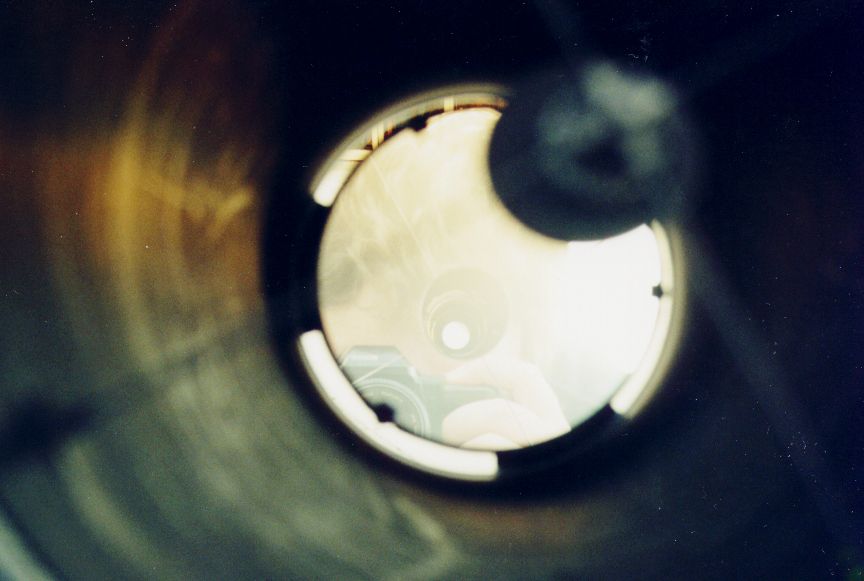
Introduction There was a "transit" of Mercury across the face of the Sun on Monday Nov 15th, 1999. We used one of the big telescopes that the Physics department has (a 10 inch reflector) to "project" the image of the Sun's disk onto a screen so we could watch the transit in real-time. We basically saw a very tiny dot (in between the clouds!!) - but since that won't come around again for another 6 years, we were happy!
What equipment did we use? Here is an image looking down the tube of our big telescope. There is a converging mirror at the far end, and that object in the upper right is a second flat mirror that takes the light from the big mirror and shoots it out sideways through the eyepiece. We adjusted the focus so that the image resolved about 2 feet away from the eyepiece on the screen.

Setting up the equipment. Here is a shot that shows the screen down on the ground and the large tube reflector scope (the real Sun is to the left in this picture .. we are out in front of the Science Building). Andrey is shown adjusting the scope - he did a masterful job of keeping the Sun on the screen for all the onlookers!
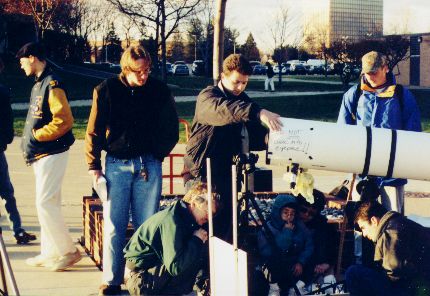
We had three scopes in total. Shown here is some of the other hearty observers (Peter, Toby, and Bill) and the second department scope (a small refractor scope). This scope has a solar filter on it, so you can look directly at the Sun's disk. In the background is a fellow astronomy hobbiest, Rich, setting up his scope - he also had a very high quality filter and was able to get everything aligned just in time to see part of the transit (in between clouds!).
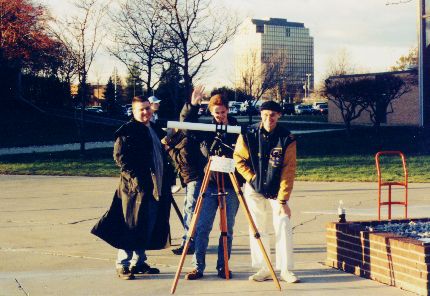
Fisheye view. Here is a fisheye lens (180 degrees of view) of the main scope and the screen. As you can see, we have a few clouds covering the Sun's disk - aren't we having fun yet?
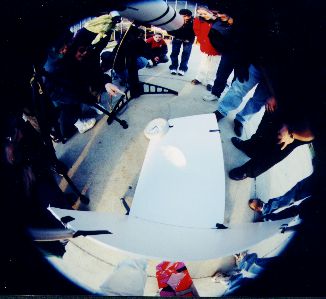
What could we see with the big scope? Here is a sample pre-transit. The dark smudges you see near the middle of the disk are a large group of sunspots. This image is projected from a telescope onto the white screen - the direction of the real Sun is to the right in this picture, and you basically have the perspective of the telescope (the camera is right near the eyepiece for the telescope).
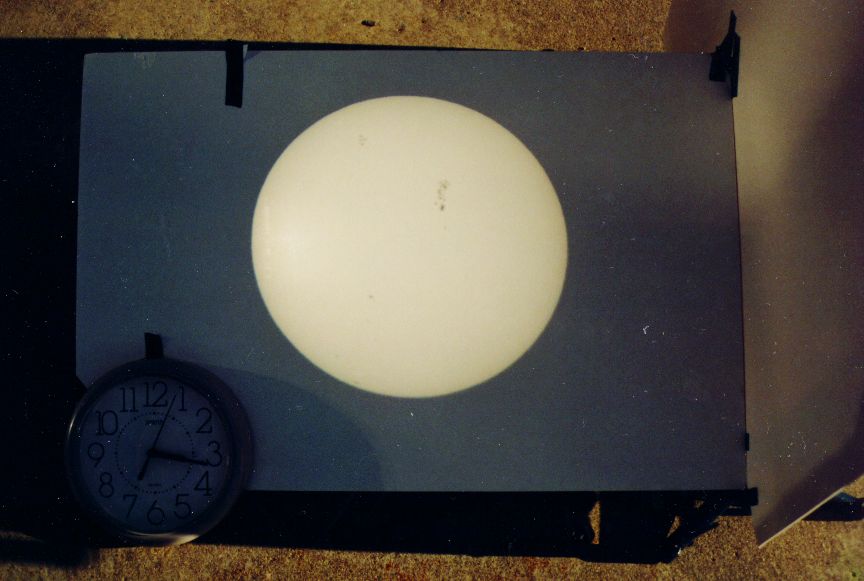
CLOUDS, CLOUDS, CLOUDS! This is what we saw alot of - CLOUDS! We railed against them, we shook our fists .. they didn't seem to be listening. Luckily we did get some breaks and could observe parts of the transit (once we finally figured out which part of the disk we were supposed to be watching!)
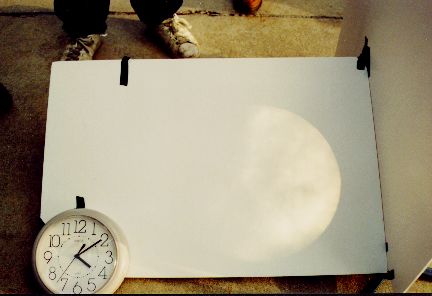
Human interference. When I was away from the telescope, the mice would play! If you look back at the trio behind the small scope, and compare the waving arm with these arms .. I think we have our culprit. Charges are pending ...
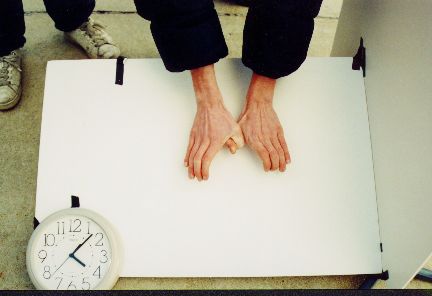
Our first image (though you can't see it here!) This is the first photographic image we got that had the planet Mercury (it would be on the left edge of the Sun's disk if you could see it). It was clearly visible to the crowd - but it was moving very slowly and was very close to the edge, so it took some time to convince ourselves that we were seeing it!
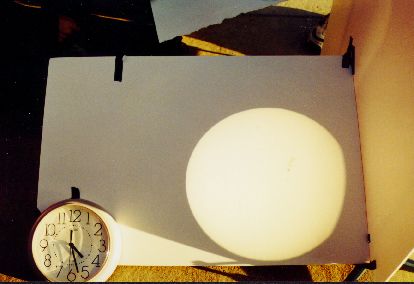
Here is a better image of the transit. These were taken with a different camera and a zoom lens. In the left picture, you can clearly see the dark spot just above the middle of the picture - that would be the planet Mercury, as seen against the disk of the Sun. This was a "grazing" transit, which meant that for us, the dot would always be very close to the edge of the sun. (Click on either image to enlarge it.) The right picture shows the same area slice of the Sun's disk that shows the major group of sunspots (notice how large they are, relative to the planet Mercury).
Sunset! We didn't get to see the end of the transit because the Sun set before the event ended. Here is an image of the trees near the horizon shadowed across the Sun's disk.
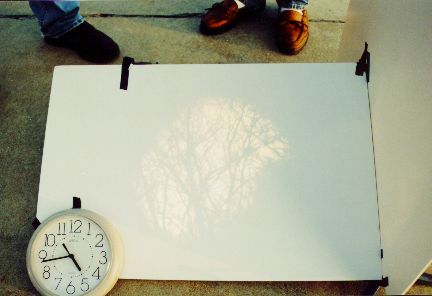
Further citrus interference! As I stated before about the mice ... I cannot confirm that this is in fact the planet Mercury. Also, note that it is on the wrong side - ha!
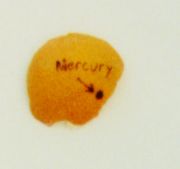
Other links :
See some information about how and why the transit occurs here.
Also, take a look at the one Leonid meteor shower picture that I took!